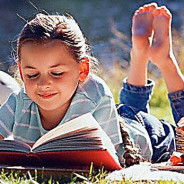
A concussion jangling your brain around is a bad thing, a really bad thing. The usual way a person suffers a concussion these days is as a consequence of forceful contact with another player, the ground or another obstacle during the course of an athletic event. Unfortunately it is people with the most vulnerable brains, children and young adults, who suffer the most concussions.
Since we have finally come to grips with the reality that concussions are bad and have serious long-term consequences, numerous programs have been developed to diagnose and, best of all, PREVENT concussions. Concussion recovery has been the neglected stepchild. Young people get concussions participating in sports, doing something they like to do. Sorting out the most effective approach to concussion recovery is really important. With half a million emergency room visits for children under age 15 suffering brain injuries every year, optimizing concussion recovery can affect many, many young people.
A newly released study of children and young adults with concussions provides us with specific guidelines about returning to activity. In this case, the ACTIVITY is cognitive. We have kind of figured out that a concussed person’s brain is injured so, like an injured arm or leg, limited use is probably a good idea. This investigation dug much deeper, considering how much, how soon and how intense the brain work should be. In other words, the study focused on how we might optimize concussion recovery.
One of the authors was quoted:
“Our findings suggest that while vigorous cognitive exertion is detrimental to recovery, more moderate levels of cognitive exertion do not seem to prolong recovery substantially. Thus, we recommend a period of near full cognitive rest acutely after injury, approximately 3-5 days, followed by a gradual return to sub-symptom levels of cognitive activity.”
Where EXACTLY was the cut off? What does “moderate” mean? The cut point was “reading less than 10 pages, less than 20 text messages and less than one hour combined of homework, online activity and video games per day”. Those specific numbers are very useful, especially because most young people would not consider a limit of 20 test messages and one hour of online activity/video games “moderate”, even more so when homework cuts into the allotted time.
With so many competing interests, and most of them pushing children back into full activity as rapidly as possible, it is fantastic to have such guidelines. These standards now provide us with a solid basis on which to build a rational, individualized concussion recovery program for children and young adults. Go, team!
